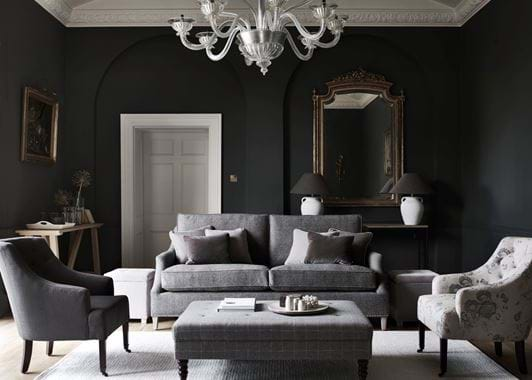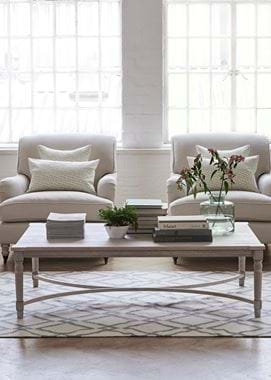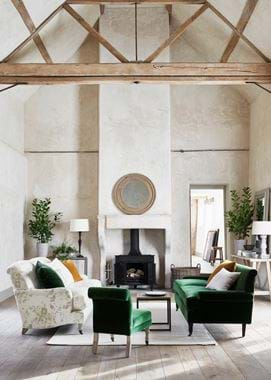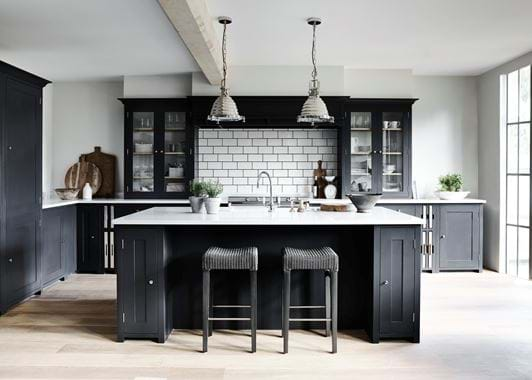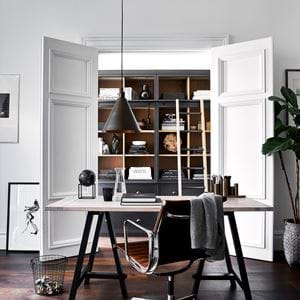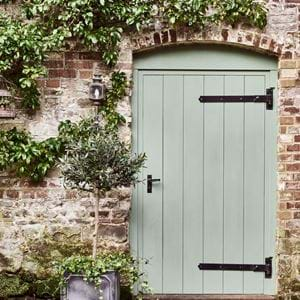Symmetry: thoughts from our founder
Symmetry: thoughts from our founder
This autumn, our interiors anthology, Stories, turned ten-issues-old. So, to mark our entry into double digits, we’ve dug into our archives to bring you nine articles from the nine previous volumes. This is the first, taken from our autumn 2016 issue. And you’ll find the rest right here on our journal in the weeks to come.
Even in childhood, symmetry permeates every aspect of our lives, from the familiar arrangement of features on our parents’ faces to the first circles we draw in geometry. We come to recognise it, not just in our immediate surroundings but also in breathtaking buildings around the globe, from the Parthenon to the Taj Mahal, as well as extraordinary exercises in artistic poise and balance such as Leornardo da Vinci’s last supper. Perhaps more exciting still is that symmetry isn’t a purely man-made concept – the natural world, as da Vinci emphasised, is full of symmetry too.
Symmetry isn’t just conceptual, nor is it something to purely be seen. Symmetry is something that’s felt too, though that’s a side that isn’t often considered. A balance in movement is necessary for riding a bicycle, for walking. We are drawn, consciously and subconsciously to flavours, colours and textures that are in perfect symmetry; hard with soft, rough with smooth, light with dark, sweetness with piquancy. We learn that even the smallest imbalance can make a big difference.
For John Sims-Hilditch, one of the founders and creative forces behind Neptune, symmetry touches almost every aspect of human experience. “Even the concept of ‘being fair’ is about evaluating evidence in a way that’s in equilibrium,” he says. “Symmetry is something we seek in the way we interact with others. Intrinsically we yearn for them to react in a way that’s reciprocal to our own behaviour, and empathetic.”
To interior design. It’s because symmetry is so omnipresent – and we are so conscious of it, subliminally or otherwise – that it lends familiarity to a space. Our eyes are naturally drawn to a focal point and are almost lost when they can’t locate one. For designers, symmetry isn’t just a way to lend a calm, cohesive feel to a room, but it helps them to manipulate space. Rooms that might’ve seemed chaotic can be brought under control with the judicious use of furniture, lighting and accessories. Mirrors, paintings or photographs mark a central axis. Pairs of sofas, chairs, table lamps and wall lights act as a supporting cast, emphasising the structure, and together create order where it might not have previously existed.
Yet, in John’s view, achieving symmetry successfully is a more subtle art than simply creating a room in which two halves mirror one another. “Look at the Mona Lisa,” he says, “at first glance, it appears to be a depiction of a beautifully symmetrical face, until you notice the slight imbalance that’s used to create an almost imperceptible hint of emotion. It gives the painting a beguiling dynamism.”
His belief is that the rules of symmetry work best when they’re broken, or at the very least, bent. While there’s no doubt in his mind that symmetry is vital when coaxing a space into feeling calm and cohesive, he equally believes that it works best when consciously undermined in some way, however subtle. Two chairs on either side of a console table in a hall might, at first sight, underpin the symmetry by appearing to be a pair, but closer inspection reveals that they’re different styles. Or a large painting on one side of a chimney breast might be balanced not by another large one, but a collection of smaller artworks. Push the boundaries further and you can create an arrangement that’s asymmetric – a large, striking item or piece of furniture that throws the symmetry but which, like Mona Lisa’s smile, is framed within a comfortingly rigid structure.
Perfect symmetry, it seems, lies in imperfection.
Giles Kime is the interiors editor at Country Life magazine – the quintessentially British magazine that offers weekly coverage of the countryside, arts, architecture, property, and Britain’s loveliest gardens.

